Homemade Pita Bread
Learn how to make homemade pita bread with this simple recipe; I promise it’s easier than you think! So much better than store-bought, you can use your pita for sandwiches, gyros, dipping into hummus, making homemade pita chips… the possibilities are endless. I can’t wait for you to make these!
Growing up, my grandma always kept a stash of pita bread in her kitchen. She would sometimes stuff it with cucumber salad or tomato salad (always fresh from the garden!), but I most often remember her splitting them open, toasting them and slathering pb& j on them.
As an adult, I discovered true, traditional pita at Middle Eastern restaurants and fell head over heels in love. They were nothing like the store-bought stuff I ate growing up, and I couldn’t get enough of it, especially if I could dip it into authentic hummus.
Once I began tackling bread baking at home, pita was high on my list of recipes to try. I was surprised (and elated!) to discover just how easy making pita bread at home could be. You’ll never want to get store-bought again!
History and origin
Pita is a general term for a family of yeast-leavened flatbreads that are common in the Mediterranean and the Middle East. The type that we are making today, with an interior pocket, is known by the generic term “pita” in most places in the U.S. and is also known as Arabic bread or Syrian bread. There are also pocketless pita versions, such as the Greek pita, which is traditionally used as the wrap for gyros.
Pita bread goes wayyyy back to prehistoric times in the Middle East; we’re talking nearly 15,000 years ago! There is evidence from the Stone Age that flatbreads were made using wild grains. There isn’t any record of the puffed, pocketed pita until more recent times, so it’s more of a “modern” take on flatbreads.
Pita vs naan
They look similar, but they are actually quite different! Here’s the breakdown:
Pita Bread
- Originated in the Middle East
- Simple list of ingredients – flour, salt, water, yeast and sometimes a small amount of sweetener or fat
- Has a drier texture
- Pocketed
- Can be made in a modern oven
Naan
- Originated in India
- Ingredients usually include yogurt and milk, and sometimes eggs or butter
- Softer texture
- Pocketless, eaten flat as one piece
- Made in a tandoor (clay oven) or in a skillet (though this version is less desirable)
How to make it
It may look and sound intimidating, but it’s actually quite a simple process, let’s talk through it…
- Mix and Knead Dough – Just as all yeast-based recipes, the first step is to mix the dough and knead it until slightly tacky and supple.
- 1st Rise – Place the dough in a greased bowl, cover, and set aside until it has doubled in size (about 90 minutes).
- Shape Into Balls – Divide the dough into 8 pieces and roll into balls.
- Rest – Cover the balls of dough and let rest for 20 minutes so they relax and are easier to shape.
- Shape – Using a rolling pin or your hands, roll/stretch the dough into a 6-inch circle.
- 2nd Rise – Once all of the dough has been shaped into discs, cover them until nearly doubled in thickness, 30 to 45 minutes.
- Bake – Place the discs on a baking stone or cookie sheet in the preheated oven and bake until completely puffy, about 3 minutes.
Oven vs stovetop
While an oven is the easiest way to cook pita bread since you can make them all at once, you can also make it on the stovetop if you want/need to.
Simply place a large nonstick skillet over medium heat. Cook the pitas, one at a time, flipping it over after about 10 seconds. Once the bread is completely puffed and has some brown patches, it is done.
Troubleshooting tips
If you’re experiencing issues with pitas not puffing (ack, no pocket!), being difficult to roll out, or browning issues, read below for my key tips on making perfect pitas:
- Keep the dough tacky – You don’t want to add too much flour or the pita will be quite dry; this shouldn’t be an issue if kneading with a stand mixer; if you are kneading by hand, I recommend using a silicone scraper for hand-kneading softer doughs to avoid adding too much flour.
- Roll the dough THIN – You want to make sure the dough is NO MORE than ¼-inch thick (⅛-inch is even better!). If the dough is too thick, it won’t be able to puff up.
- Rest the dough if necessary – If the dough shrinks back or resists when you’re shaping the circles, cover it with a damp tea towel and let it rest for 5 or 10 minutes and then try again.
- The 2nd rise is key! – The second rise doesn’t take very long (30 to 45 minutes), but you need to allow the dough to rise again for the pitas to cook correctly.
- Hot oven + preheated baking surface – Use an oven thermometer of necessary to make sure your oven is fully preheated to 450 degrees F and place either a baking stone (the BEST surface!) or cookie sheet into the oven to heat up, as well. The pitas need that burst of very hot air to do their puffing and the preheated surfaces will help get those brown spots.
- Wrap them up – Once the pitas are done baking, wrap them up in a kitchen towel while still warm. This helps them reabsorb some of the steam and keeps them softer longer.
What to eat with pita bread
- Stuff it with falafels, cucumber salad, chicken salad, egg salad, or your favorite sandwich fixings.
- Wrap up homemade gyros. While the traditional Greek pitas have no pocket, these will work in a pinch!
- Dip it into classic hummus or roasted red pepper hummus.
- Cut it up and make homemade pita chips. Season however you’d like!
- Toast it and slather with peanut butter and jelly – my grandma’s favorite way to eat it :)
If you make this recipe and love it, I would so appreciate it if you would take a moment to leave a rating below. Thank you so much! ❤️️
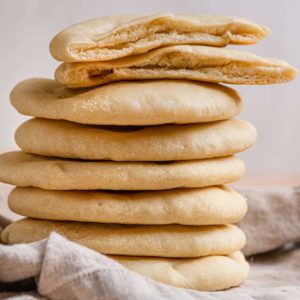
Homemade Pita Bread
Ingredients
- 3 cups (360 g) all-purpose flour
- 1½ teaspoons (1.5 teaspoons) salt
- 1 tablespoon sugar or honey
- 2¼ teaspoons (2.25) instant yeast
- 1¼ to 1½ cups (300 to 360 ml) water, room temperature
- 2 tablespoons olive oil, vegetable oil, melted butter, or shortening
Instructions
- Make the Dough: In a large mixing bowl, whisk together the flour, salt, sugar, and yeast. Add 1¼ cups of the water water and the olive oil and stir together with a wooden spoon. All of the ingredients should form a ball. If some of the flour will not stick to the ball, add more water a small amount at a time.
- Once all of the ingredients form a ball, place the ball on a work surface and knead the dough for approximately 10 minutes, until slightly tacky and soft. If you are using an electric mixer, mix it at low speed for 10 minutes.
- 1st Rise: Place the kneaded dough into a greased bowl, turning to coat it. Cover the bowl with plastic wrap or a damp kitchen towel and set aside to rise until it has doubled in size, approximately 90 minutes.
- Roll Into Balls: When it has doubled in size, punch the dough down to release some of the trapped gases and divide it into 8 pieces. Roll each piece into a ball, then cover the balls with a damp kitchen towel, and let them rest for 20 minutes. This step allows the dough to relax so that it'll be easier to shape.
- Preheat the Oven: While the dough is resting, preheat the oven to 450 degrees. If you have a baking stone, put it in the oven to preheat as well. If you do not have a baking stone, turn a cookie sheet upside down and place it on the middle rack of the oven while you are preheating the oven. This will be the surface on which you bake your pitas.
- Shape the Pita: After the dough has relaxed for 20 minutes, spread a light coating of flour on a work surface and place one of the balls of dough there. Sprinkle a little bit of flour on top of the dough and use a rolling pin or your hands to stretch and flatten the dough. You should be able to roll it out to between 1/8 and 1/4 inch thick - 6 inches in diameter. If the dough does not stretch sufficiently you can cover it with the damp towel and let it rest 5 to 10 minutes before trying again.
- Place discs on a lightly greased baking sheet and let rise, uncovered, until barely doubled in thickness, about 30-45 minutes.
- Bake the Pitas: Open the oven and place as many pitas as you can fit on the hot baking surface. They should be baked through and puffy after 3 minutes. If you want your pitas to be crispy and brown you can bake them for an additional 3 to 5 minutes, but it isn't necessary. Wrap the baked pitas in a kitchen towel to help trap some of the steam and keep them soft.
Notes
- Sugar - You can substitute the same amount of honey for the sugar in the recipe.
- Olive Oil - You can substitute the same amount of vegetable oil, melted butter, or melted shortening.
- Equipment - Baking stone / Skillet / Rolling pin
- Make-Ahead - Once the dough has gone through its first rise, you can store the dough, tightly covered, in the refrigerator for up to 1 week.
- Storage - Homemade pita is best eaten fresh, but it will keep in an airtight container at room temperature for up to 2 days. Reheat in the microwave, toaster oven, or skillet if desired.
- Freezing Instructions - Cool completely, then store in a freezer ziploc bag or another airtight container, placing a layer of wax paper between pitas to keep them from sticking. Freeze for up to 3 months. You can reheat from frozen.
- Recipe adapted from The Fresh Loaf and Culinary Infatuation
Did you make this recipe?
Leave a review below, then snap a picture and tag @thebrowneyedbaker on Instagram so I can see it!
[Photography by Dee of One Sarcastic Baker]


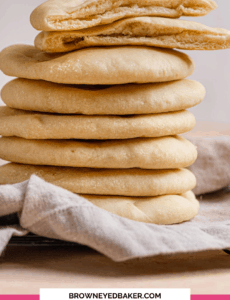
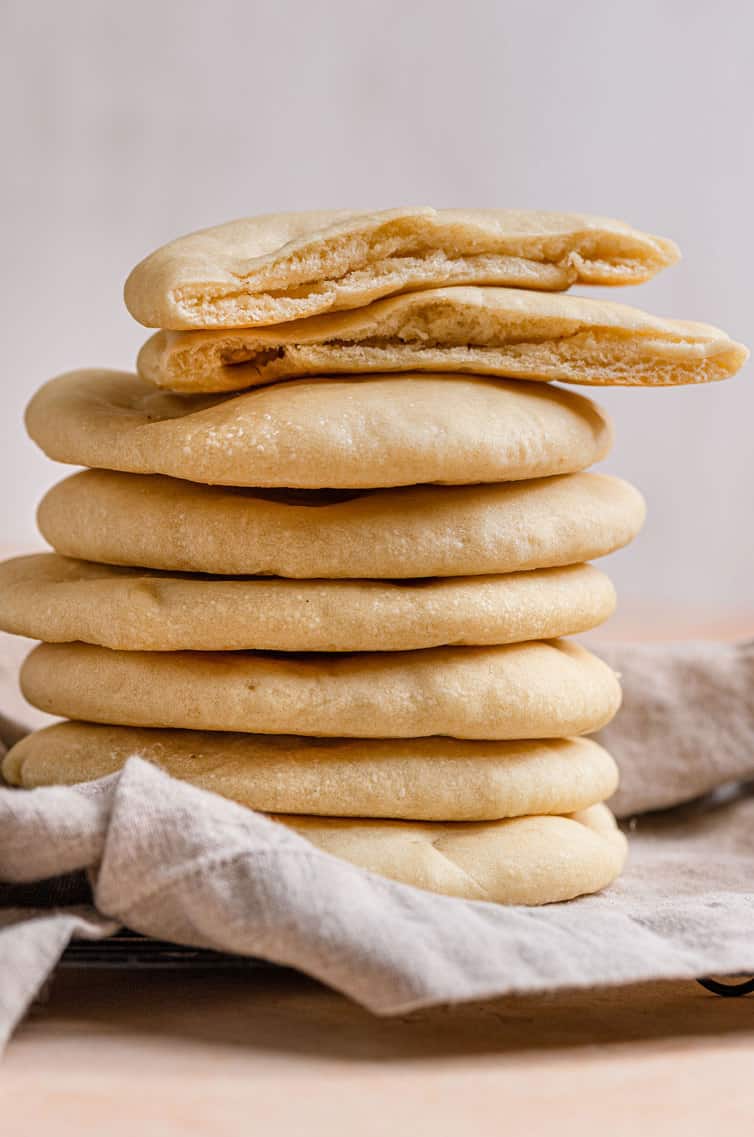
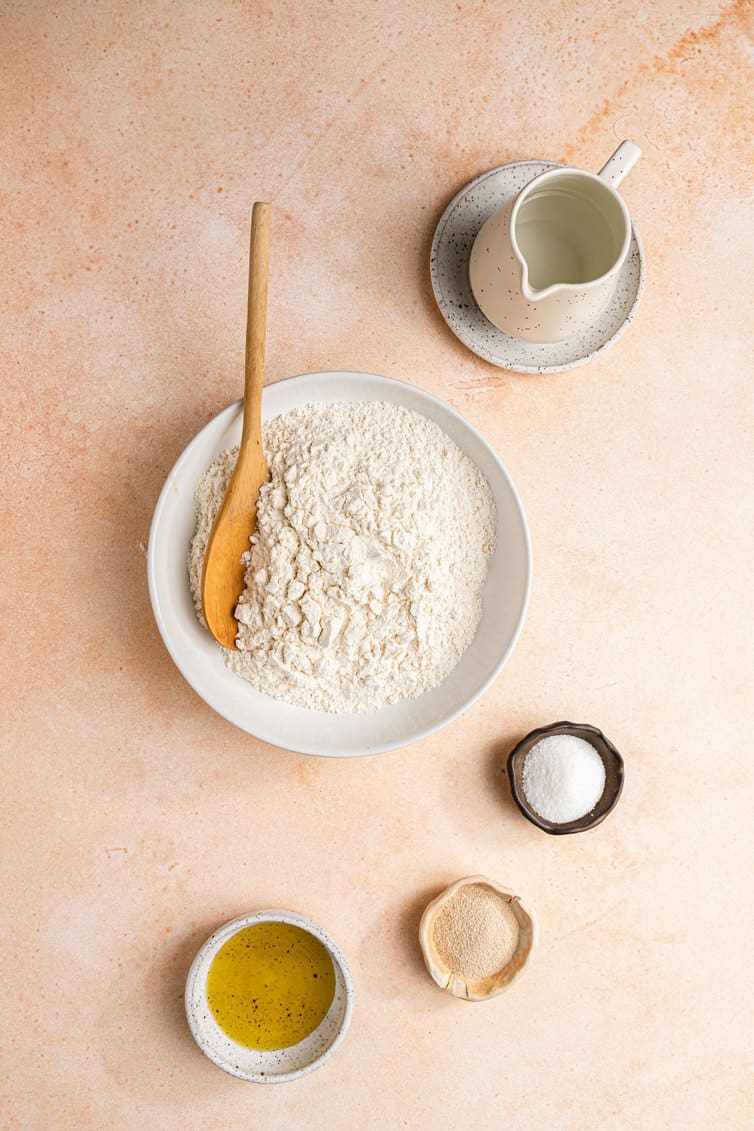
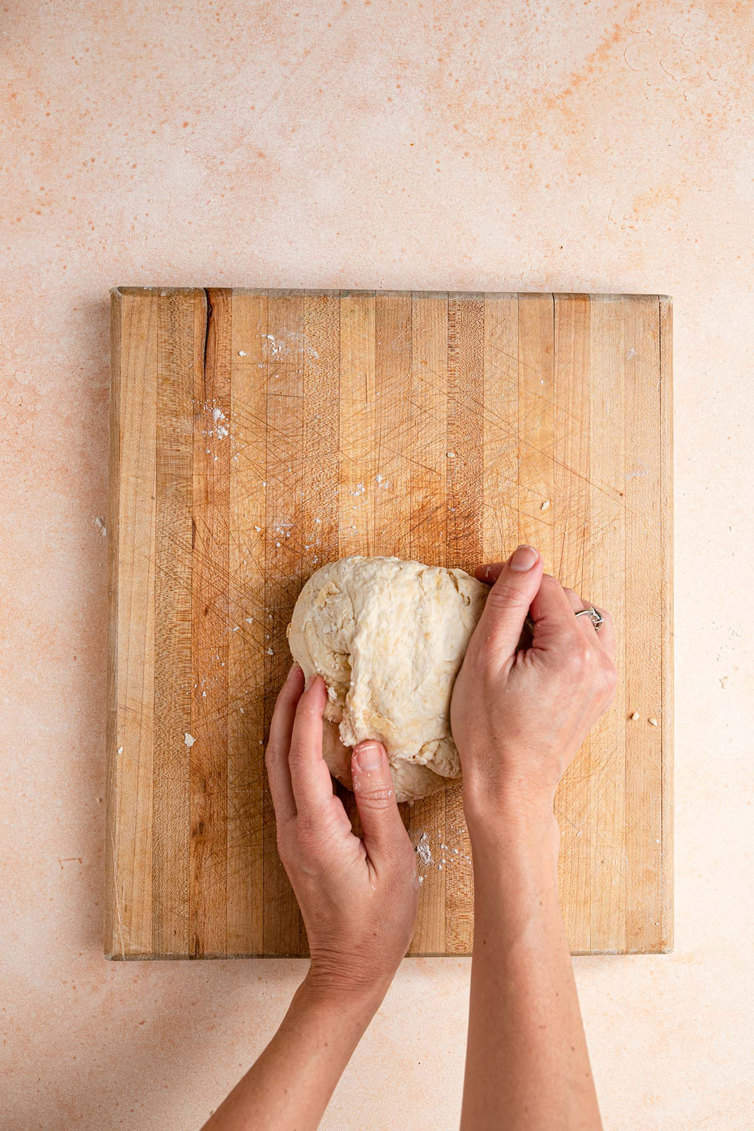
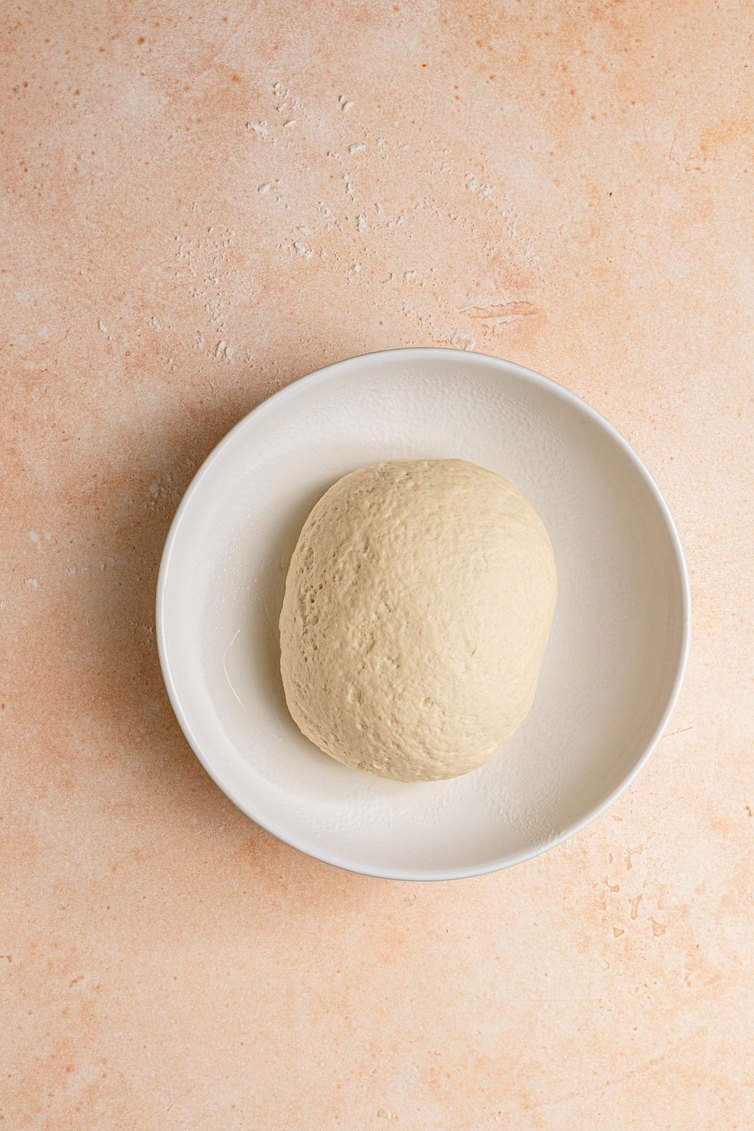
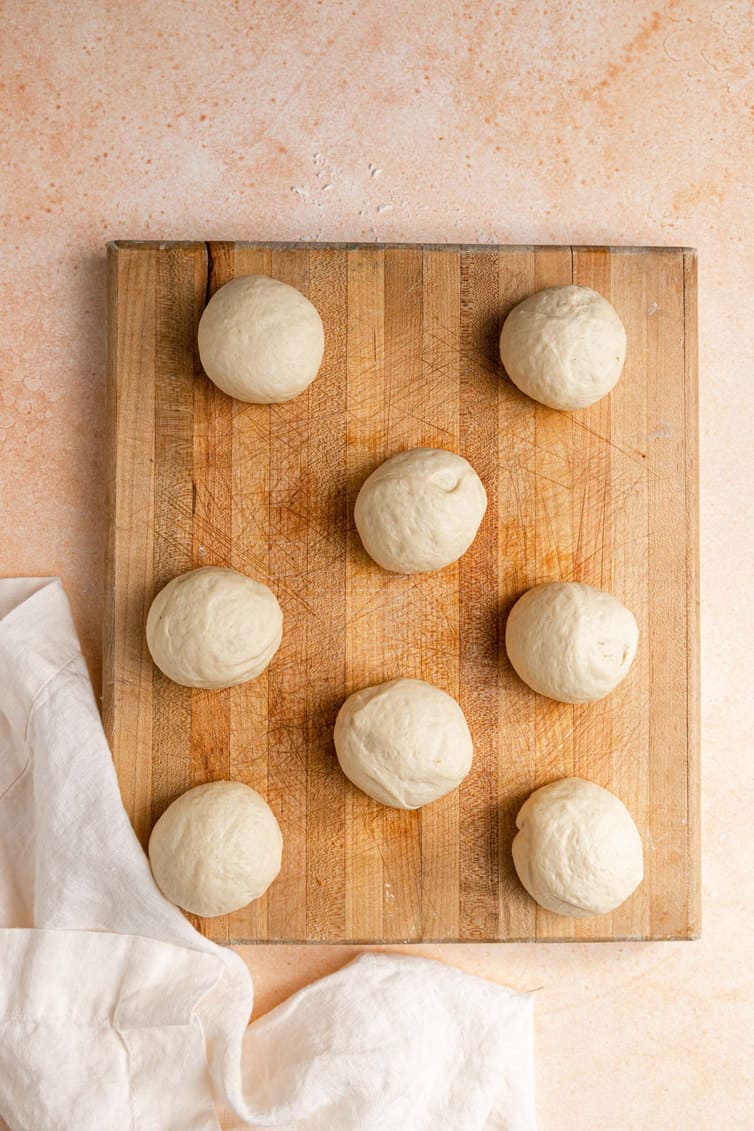
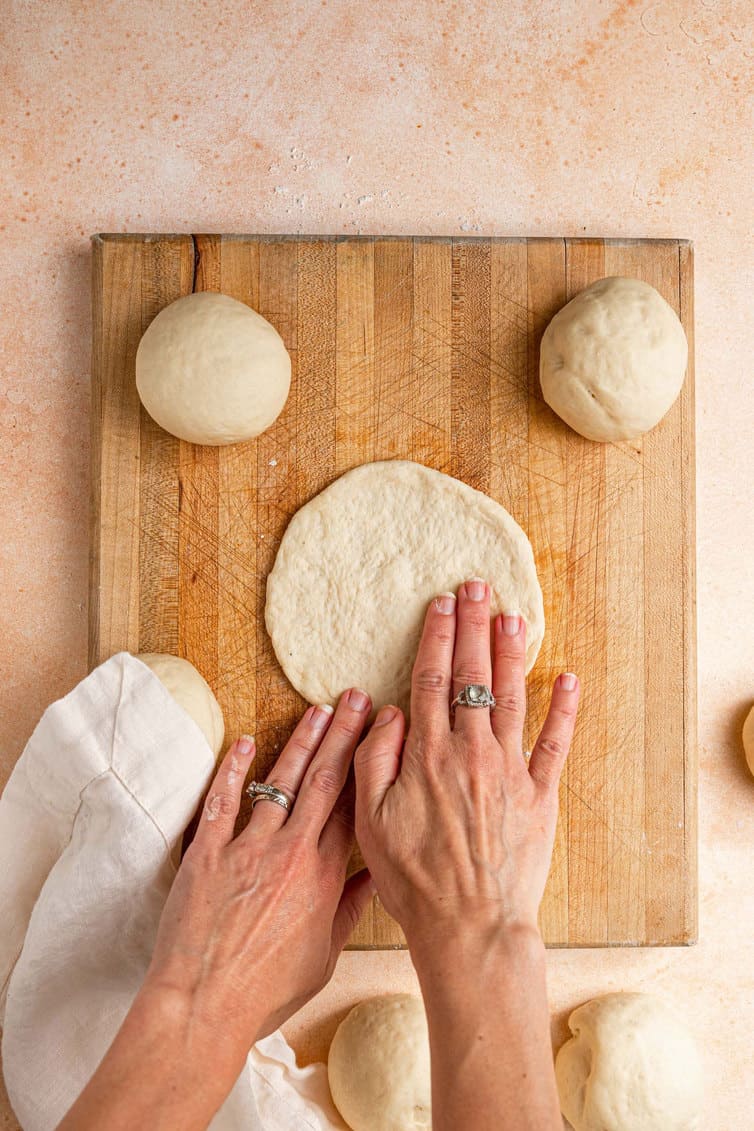
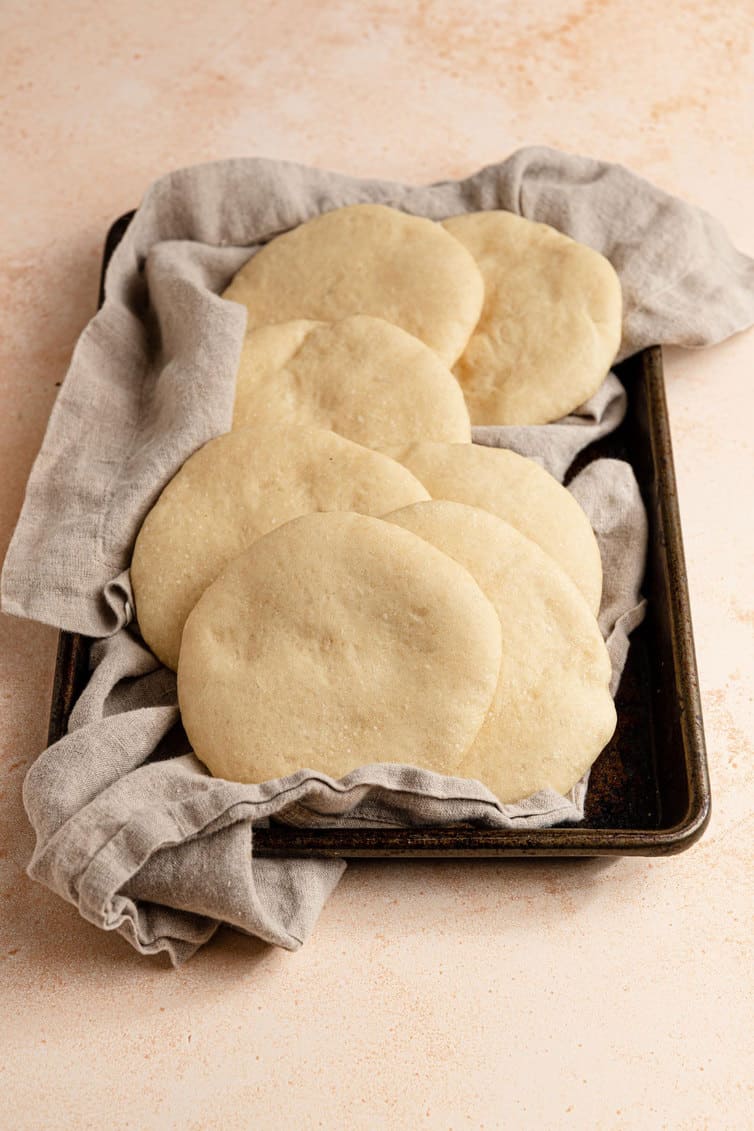
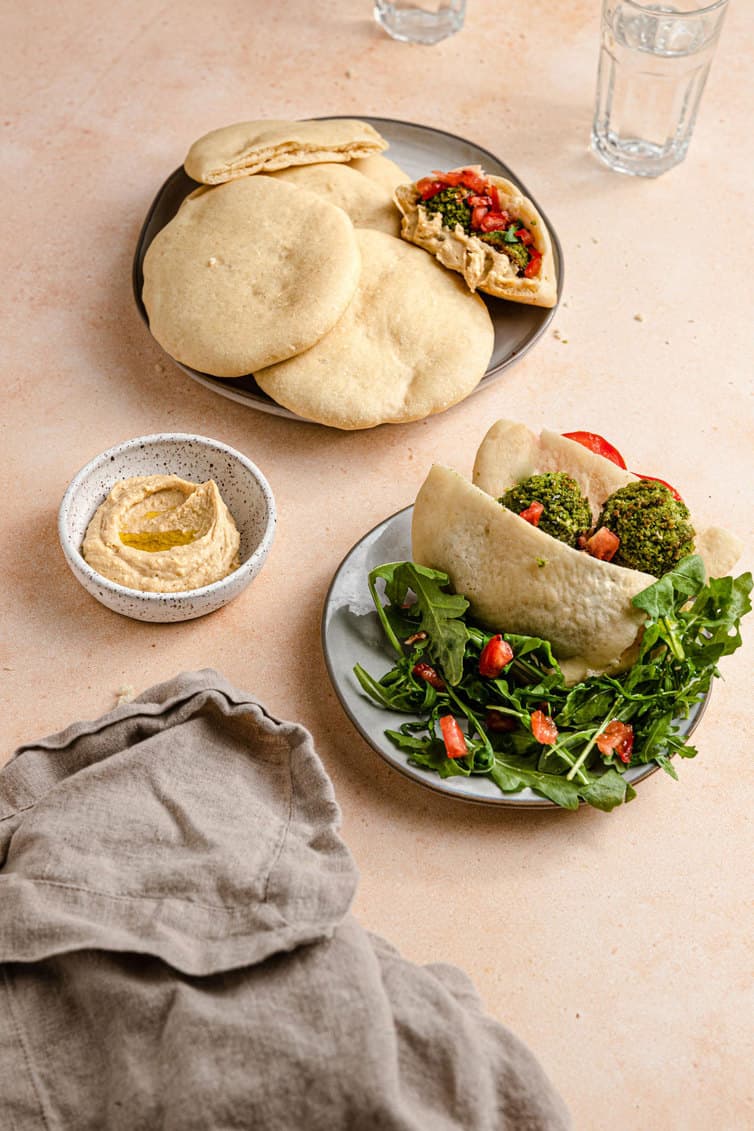



F*ckin’ tremendous things here. I am very glad to see your article. Thanks a lot and i am looking forward to contact you. Will you kindly drop me a e-mail?
Excellent web site. Plenty of useful info here. I’m sending it to several friends ans also sharing in delicious. And naturally, thanks for your sweat!
I have been reading out a few of your articles and i can claim pretty nice stuff. I will surely bookmark your site.
There are some attention-grabbing points in time on this article however I don’t know if I see all of them heart to heart. There is some validity but I’ll take hold opinion till I look into it further. Good article , thanks and we would like extra! Added to FeedBurner as well
You made some respectable factors there. I appeared on the internet for the difficulty and found most people will go together with with your website.
There is noticeably a bunch to realize about this. I suppose you made certain good points in features also.
This looks delicious.I baked this for my mother. She absolutely loved it.Thank u so much for a fantastic recipe.Great share.
I’m so happy to hear that!!
Do you think this would work with gluten free 1:1 flour?
Hi Amy, I haven’t tried it with gluten free flour, but I think it should work! Let me know how it turns out.
This looks really good!
Why use the BACK of a heated cookie sheet?
Hi Cheryl, A flipped-over baking sheet is a common substitute for a baking stone because it makes it easier to add and remove the bread from the surface without the rim getting in the way.
This looks like an awesome recipe and I’m excited to try it!
Could the pita dough be done in the bread machine on dough cycle?
I think that would work fine!
I really like your recipe and appreciate it too, but I have my own pita bread maker at home, due to which I can make them anytime. I liked your idea of crispy tacos a lot i would definitely try them.
Terrific. By far the best pita recipe I have found so far. The pitas were soft, fluffy, pale in color, with huge pockets. I have been trying to duplicate my favorite bakery pita, which looks more like a disk cut from a cylinder, about 1/2 an inch thick with rack marks on one side, golden brown and melt in your mouth fluffy inside, almost challah- like. Never saw these anywhere else. Any ideas on how to create pitas like this with your recipe?
I know this is an old comment but if you are looking for a fluffy pita, look for Mike Solomonov’s recipe from Israel Soul. It’s a very high hydration dough that results in pillowy pitas.
I had no idea that pita bread is so easy to make. This is seriously the best thing since sliced bread. I made these last weekend because I needed some and di not want to run back to the store. I’m so glad I did. This recipe is a keeper for me.
WOW!!! I’ve just made those, and they are just perfect!!! Also, half of the flour i used was whole wheat flour. They are delicious, and the dough is soo easy to work! Some of my pitas didn’t puff out or not completely while on the oven, is it because they needed to grow a little bit more before baking?
Thanks!!
Hi Teresa, That’s definitely possible. Unfortunately, sometimes it’s difficult for me to be able to give a certain reason as to why something didn’t go quite right given all of the different variables that can affect any given recipe.
Well you’ve done it again. Another great recipe! Another great success! Won’t be buying shop bought again. Accidentally used bread flour but that didn’t seem to affect the outcome. Thanks
COULD YOU PLEASE TELL ME HOW MANY TEASPOONS/TABLESPOONS IS 1 PACKET OF YEAST? ALSO, WHAT IS THE EQUIVALENT MEASUREMENT OF FRESH YEAST TO DRY YEAST AND VICE VERSA. THANKS.
1 packet of yeast is 2.25 teaspoons. I would check the packet for fresh equivalents, but usually you could do 1 cake yeast for 1 packet of dried.
I’m on your list, receiving your blog notice each week or so.
THanks.
chris
I’m always intimidated by making bread but this recipe looks so good I have to give it a try. I would love to be able to make my own pita. I don’t care for store bought. Thank you for sharing this recipe!
I just made these, and they’re delicious. I’m so proud that I made my own pita rather than buy it at the store! I started the dough last night, and then got too busy to finish the pitas. I pulled it out of the fridge this morning and went to work. I didn’t let it rise the 2nd time as you did, because it had already done it’s second rise in the fridge. Mine aren’t as puffy as yours, but they’re still tasty. I’m using them to make Kofta Kabobs for dinner tonight!
Uau! Este pode ser em particular, um dos mais interessantes blogs que tenho conhecido sobre este assunto. Verdadeiramente excelente!. Eu sou também uma especialista neste tópico, assim posso compreender o seu esforço para manter um site destas caracterísitcas. Parabéns!
I tried this recipe and made 2 batches. The first one following the directions and the second one with half whole wheat flour half regular. The whole wheat was quite tasty. You should try it!
Oh the possibilities. I love how enormous the pocket is inside. I will try these as soon as I can. Thanks!
Hi Sana,
The top of my pita always seems to be thinner than the bottom, so I’m not sure how to correct. But, when I buy them from the store, they seem to be that way too, so I wouldn’t worry too much about it. I’m glad you liked them!
Hi Michelle
I made these yesterday and they came out great. However there was one thing. I rolled my pockets to just over 1/8″ thick, and stuck them in the oven. They started pillowing around 2 1/2 minutes, finishing about a minute or so later.
But, the top of the pocket is SO thin compared to the bottom of the pita. Is there any way to get the top and the bottom a little more uniform? Or is it normal to have it thinner on the top than the bottom?
Hi! I came across this recipe while in search of a good pita bread recipe. I will try it this weekend and let you know how mine turned out. By the way, it would be great if you could include nutritional info on your recipes, if possible. :) Thanks!!!
After making this recipe twice, I can say the trick to getting good pockets is not rolling the dough out too thin. I made that mistake the first time and on a few the second time around. I finally re-read the directions and realized I was going much too big.
The second time I made the dough, it came out really sticky, and I think that had to do with the humidity on the day. I added a bit more flour and a lot more olive oil to keep the whole thing from sticking everywhere. It all worked out in the end though. They were fluffy and tasty. Then I turned some into pita chips but cutting them up and baking them.
Thanks!
I am waiting for the dough to rise right now as we speak!
I found I had to add a few handfuls of flour when I was kneading as my dough was super sticky, although it is pretty humid today and that might have something to do with it. I hope that’s ok……..I’ve only made kneaded bread once and it wasn’t that great, I usually stick to the no-knead kind because I never feel I am doing it right.
Crossing my fingers for perfect pita-ness!
My pita breads are all rolled out and just waiting to double in size.
This is not just a great recipe, but the pictures, and the notes mean that it’s easy to follow.
Well done – I can’t wait to take them to work for lunch and proudly tell that I made them myself!!!
They look wonderful! I love pita and seriously could eat it with every meal!
My mother and I made this recipe and they are delicious! They didn’t last long in the house. Thanks for sharing!
Yum. Those look great. I’ve made pitas once, with the recipe in the Bread Bible. I definitely need to try it again. Especially since I just checked my notebook and discovered that it’s been three years since I did that.
OMG! They look fantastic! I may pop my yeast cherry with them;)
I love hummus too! I’ve made piadine to go with it before, but I don’t think I’ve tried making pita bread – it has been on my to do list. I’ll have to try it soon.
how cool! i’ve been wanting to try my hand at this since seeing it on ally’s blog too! it looks great!
Fantastic! I definitely have to give this a try! :)
I’ve never tried to make my own pits bread, gotta give it a go. They look great.
wow, awesome! i had no idea pita bread was so easy (or at least you make it sound easy).
those are gorgeous. i’m definitely gonna have to give this one a try some time!
Great job, those look fantastic. I’m a big pita fan myself. yum…
Oh yum Chelle, these look awesome! I can’t wait to make some so I can turn them into sandwiches and pita chips! Thanks for sharing.
The thing I love about making bread is it always looks so storebought. Professional. Perfect. These are no exception.
Sharon – I actually did freeze mine! I wrapped each one individually and then put them all in a freezer bag. They were perfect.
They look perfect! We eat a TON of hummus, so having homemade pitas would be so nice. Did your leftovers keep well? I’m wondering if you could freeze the extras…
I’ve been meaning to make my own pita for a while now, too. This looks great! I need to figure out how to make the “Greek” kind that is soft and doesn’t have a pocket, too. But, I’m not quite the bread extraordinaire, yet. :)
They look like beautiful sand dollars! They really look wonderful!
Ohh Chelle the bread looks great!
pita bread is delicious, and so much fun to make! my old oven didn’t have a window in it, so i could never watch the puffage–a tragedy, i know. i have a window now, and i always find an excuse to make more pitas! :)
These look terrific! I am saving this so that I can try it!! I haven’t had pita bread in years!
That looks great! Most homemade pita breads I’ve seen on blogs look hard and crispy, so I’ve not been inclined to make it myself, but yours look perfect!
Yeah, we have been making pita since I was younger and I HATE store bought now. It’s a good addiction, though. Looks great!!
The pictures don’t work for me right now (stupid work!), but this is such a great idea! I love pita bread!